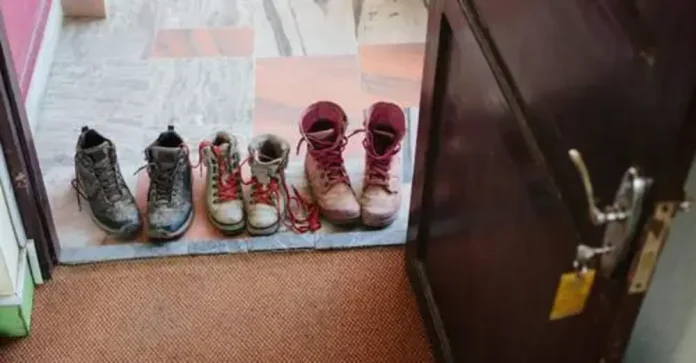Before stepping into someone’s home, you may encounter the age-old dilemma – to remove or not to remove your shoes. This debate spans across cultures, driven by a myriad of reasons ranging from practicality to religious beliefs. In the United States, discussions about wearing shoes indoors often revolve around concerns about bacteria and dirt. However, delving into the microbial world on our footwear reveals a more nuanced perspective.
Across the globe, the tradition of removing shoes before entering a residence is widespread. In the United States, the discourse often centers on the potential health hazards associated with bringing outdoor contaminants inside. Studies have indeed identified bacteria like E.coli and Staphylococcus aureus on shoes, with the latter capable of causing skin and blood infections. Despite these findings, the risk of contracting illness from the bacteria on shoes is considered minimal for healthy individuals.
Kevin Garey, a clinical pharmacist and professor, emphasizes that the typical footprint lacks the concentration of microbes required to pose a significant health risk. While shoes may carry residues of pesticides, herbicides, or construction materials, the likelihood of these substances leading to disease transmission remains low. Health risks associated with such residues range from minor skin or eye irritation to more serious concerns like cancer. However, bringing trace amounts of these substances into one’s home through shoes is unlikely to elevate the risk of disease.
The decision to remove shoes, nevertheless, extends beyond health considerations. Some individuals choose to leave shoes at the door to reduce dirt and dust within the home, making cleaning more manageable. Additionally, this practice helps protect floors susceptible to scratches and nicks, minimizing wear and tear over time.
Cultural and upbringing factors also play a significant role in the choice to go shoeless indoors. For those who strongly adhere to this custom, it is an act of courtesy to respect a household’s preference. If a host explicitly requests guests to remove their shoes, it is perfectly normal to comply, recognizing that the desire for a shoe-free home is rooted in cultural norms and upbringing.
In the ongoing debate over whether to remove shoes indoors, it is essential to strike a balance between health considerations, practicality, and cultural respect. While studies may identify bacteria on footwear, the associated health risks for the average individual appear minimal. Nonetheless, the decision to adopt a no-shoe policy may stem from a desire to maintain cleanliness, protect household surfaces, or honor cultural traditions. In the end, whether you choose to remove your shoes or not, a fundamental principle remains – respecting the preferences of your host is a gesture of courtesy and consideration.
image source : life hacker










